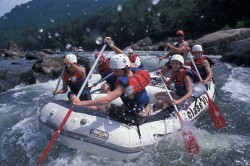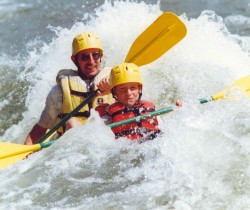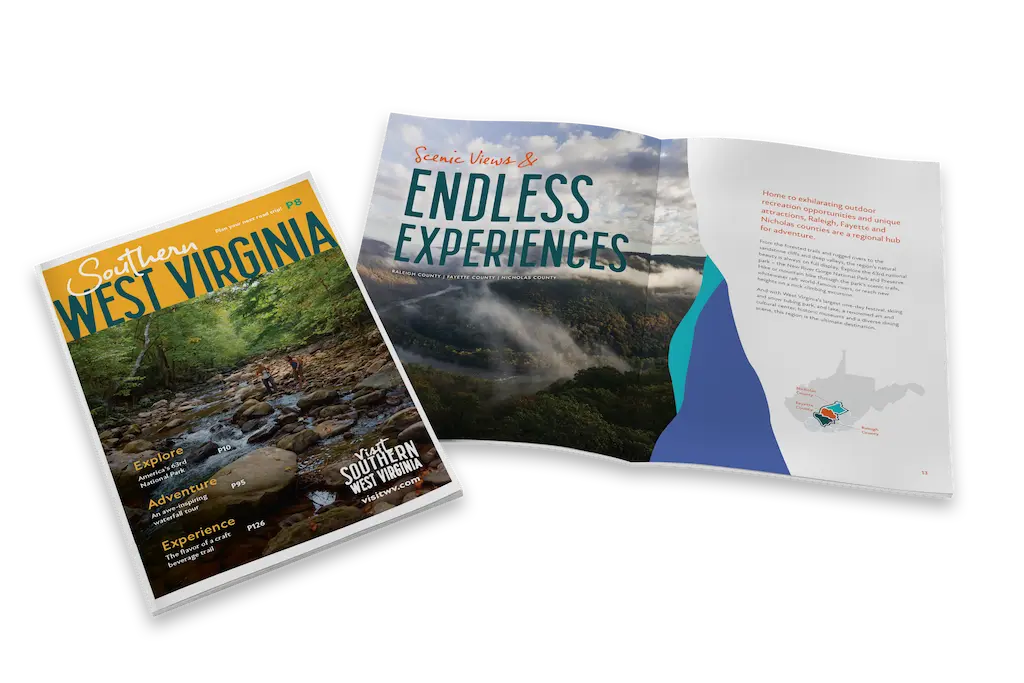Whitewater Rafting: A beginners guide
May 22, 2015Spring has sprung and Summer is on it’s way, the trees are green, the flowers are blooming, the birds are chirping and the rivers are running.
Different water levels expose and change the features of the river so rafting at higher or lower water levels can be a very different experience, with faster current at high water and more technical rapids at low water.
If you are new to rafting, you are in for great fun and wild adventure. River trips are exciting and challenging. We’ve compiled this beginners guide to make sure you stay safe, have fun and know what’s going on.
What to Wear
What you wear depends on the weather. Wear clothes that will be comfortable next to your skin when they are wet. Dressing in layers of synthetic fabrics will help you stay warm during the cool mornings, and by peeling layers off you won’t be too hot in the afternoon. You can wear sneakers, wetsuit/water shoes or sandals that will stay on your feet so you have traction in the raft and on the shore. (Flip flops tend to get sacrificed to the River Gods)
Sunscreen
Apply sunscreen before you go and reapply during the day as needed. Many guides carry sunscreen, or they have a dry bag that you can use to take some with you.
Glasses/Sunglasses
If you wear glasses or want to take sunglasses, make sure you use a sunglass strap. You will get wet, you will be bouncing around and your glasses will fall into the river.
What To Take/Not To Take
You do not need to take expensive electronics such as cameras or phones. They will get wet, and they could get lost. You do not need your car keys or money. Your outfitter will have a safe place for you to stash your keys, and there is nothing to buy on the river.
If you have medication or something you must have with you during the day be sure and let your Trip Leader (definition below) know and he will make sure your guide it is kept is a dry, secure bag.
What’s the Guide Talking About?
You’ll learn all kinds of new terms and lingo from your guide. We’ve compiled a quick list so you’ll be better able to understand what your guide is talking about, but rest assured if you have any questions your guide will gladly answer them! Guides love to talk.
- Put In: Place on the river where the trip will begin.
- Take Out: River trips are point to point, the take out is the downstream place on the river where the trip ends.
- River Right & River Left: Right and left are right and left when you are facing downstream. If you fall out of the boat and are facing upstream remember to turn around and get your bearings before swimming to which ever way – right or left – your guide is prompting (yelling) for you to head towards.
- Rapids: Sections of the river where the features of the river bed make rafting fun & wild, usually with big waves. Rapids are Class I – V – with I being small, playful rapids and V being large (fun), technical runs – if you would like to keep your body in the boat be sure to always listen to your guide’s commands while traveling through the rapids!
- Flow or Water Level: The amount of water flowing through the river, measured by CFS (cubic feet per second).
- Paddle: A single blade paddle held in the hands, used by you to power the raft.
- Bow: Front of the raft.
- Stern: Back of the raft.
- PFD: Personal Flotation Device, worn over your clothes like a vest. It’s commonly known as a lifejacket. Please do not bring your own, the rafting industry has strict standards on the type of PFD worn and these will be provided to you along with the helmet and paddle.
- Brain Bucket: Helmet worn on your head.
- Guide: The person who is in charge of the raft and gives directions to the paddlers and is known to tell very bad jokes.
- Trip Leader or TL: The person in charge of the trip. They usually give the Safety Talk prior to the trip, and guide the first raft, with the other rafts on the trip following.
- Sweep: The person who guides the last boat in the line-up.
- Swimmer: A person who has fallen or jumped out of the boat into the water.
- Flip: When the whole boat flips over and everyone falls out and swims.
- High-side: A command called by the guide to prevent the raft from flipping, when everyone moves to the high-side to weigh the boat down.
All good adventures should start with enough planning and knowledge to get you started, and we hope this little intro helps you on your first rafting trip.
Do you have a first time rafting trip story you’d like to share?



